BLACK BOX – KINSHIP WEEK
Show times 10:00 | 11:30 | 13:00 | 14:30 | 16:00
Total Running Time: 1 hour 30 minutes
What connects us? How do we relate to the world around us? Is kinship more than family?
In KINSHIP week, we explore the connections that form between us and the world around us, finding forms of kinship within the body, through family and beyond. In KINSHIP I we begin by asking what kinship means in the context of the body. Inside the Shared Life asks us to reflect on our relationship with the multiple species of bacteria and viruses that live on and inside our bodies. Then with Battle of Blister and Tame is to Tame we ask how reconsidering these relationships might change our approach to medicine and medical treatment. In KINSHIP II we explore a sense of connection across time and space with works that look at life from other perspectives. We begin with Paul Goodfellow’s meditative work that allows us to reflect on what we might understand by terms such as kinship, connection and boundary, followed by an oceanic-scale sense of historical and geographical kinship in Karen Kramer’s Limulus. Then we move to a world seen through the eyes of an organism looking for a host in Anne Milne’s Invasion and finally a surreal attempt at communication between cells and their scientific ‘owners’ in an excerpt from Louise Mackenzie’s Zone of Inhibition. In KINSHIP III we move towards a familial sense of kinship. We explore how families deal with the unknowable impacts of genetic medicine in Future Families and how medical experts understand kin through their patients in Jacqueline Donachie’s Tomorrow Belongs to Me. We then see how kinship can arise through making art in Claudia Sacher’s Binky before closing with two moving, award winning works that explore the impact of genetic illness on family members with Lucy Walker’s The Lion’s Mouth Opens and Jacqueline Donachie’s Hazel.
CONTENT GUIDANCE:
Some films contain scenes of a medical, surgical or physical nature*, or occasional strong language** that some viewers may find uncomfortable. Whilst there is no age specific content guidance, and viewing of all films is at the discretion of parents, we have deemed content suitable for age 12+
KINSHIP I
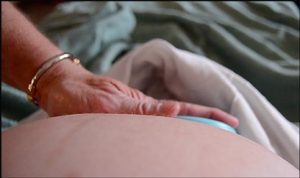
Inside the Shared Life (2017)
Erin Espelie
09:13
Inside the Shared Life is part of filmmaker Erin Espelie’s RGB (Red Green Blue) film trilogy. Each of the three films focuses on red, blue, or in this case, green, from a medical standpoint. With the voice of (r)evolutionary biologist, Lyn Margulis – who challenged contemporary scientific practice to develop her theory of symbiogenesis – Inside the Shared Life presents a world within worlds, where we understand our evolutionary origin as part of a complex co-existence of species that have, over time, come to live and thrive alongside one another in communities, partially bound by bodily forms.

Battle of Blister
Genetic Moo and Dr Neil Dufton
05:54
Each sequence in Battle of Blister has been generated by human performers in an interactive film set. The animations capture the complex dynamics of microbial and cellular relations during inflammation, charting the escalation from a fly bite to a full scale engagement. The language of the battleground is common when referring to infection however during KINSHIP week, we question the idea of body as battlefield and instead ask what other forms of relation we might find in the body.
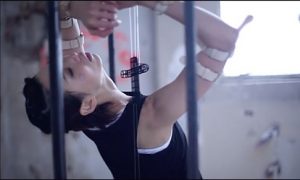
Tame is to Tame (2016)
Pei-Ying Lin
03:00
Artist Pei-Ying Lin’s project Tame is to Tame was a forerunner to Virophilia, screened in our FUTURES WEEK. Lin asks us to reconsider our relationship to the virus. Throughout history viruses have integrated themselves into our genome and became a part of the ‘human’. They evolve, and we evolve with them. Despite this deeply intertwined relationship, humanity treats viruses as enemies. Through this project, Lin and scientist, Miranda de Graaf, try to establish whether we can treat viruses as wild animals and build a controllable bond with them. In other words – to tame them. Is it possible to befriend/observe viruses that remain dangerous from a safe distance, as the virologists have been doing for decades? Can this relationship be extended to the general public?
KINSHIP II

Boundary (2019)
Paul Goodfellow
02:00
www.northumbria.ac.uk/about-us/our-staff/g/paul-goodfellow/
The visuals in Paul Goodfellow’s meditative work allow for reflection and contemplation of what it means to connect, to grow and to form boundaries. Paul Goodfellow is He is Programme Leader of the MA in Animation in the Department of Arts, at Northumbria University ,an artist and an animator.. With a background in Environmental Science, Visualisation and Art, Paul is interested in the intersection of these disciplines, and how aesthetic and affective experiences emerge within complex systems. Boundary forms part of Goodfellow’s on-going enquiry into the nature of objects, and whether objects are solely defined by their relationships or whether their true nature is withdrawn from access and specifically the human gaze.
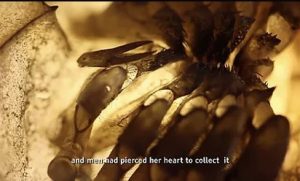
LIMULUS (2014)
Karen Kramer
11:45
This speculative work makes kinship connections through space and across time. In LIMULUS the narrator is a supernatural piece of marine debris. The protagonist alludes to kinship connections that span geological time and species boundaries, combining human medical history of the horseshoe crab with the potential for marine pollution caused by a discarded helium balloon and the demise of American jukebox company Seeburg. This complex but beautifully woven tale draws our attention to the almost incomprehensible span of humanity’s presence and impact on earth.
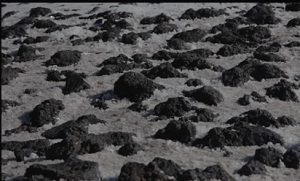
The Lab I: Invasion (2015)
Anne Milne
12:36
What is our relationship to the organisms that we host within our bodies? Invasion is a fantastical, otherworldly journey of an imaginary, mysterious thing that has come to Earth looking for a host. Macro, micro, natural, artificial, inside, outside, Invasion is an investigation into the lives of pathogens, bacteria, parasites and other creatures, from the air to the lab. We are brought into a world that is claustrophobic and at times frightening. Who is the host and who is the guest?

Zone of Inhibition (2019; work-in-progress)
Louise Mackenzie
06:27
Zone of Inhibition is the working title for a short film under development as a result of performative genetic modification workshops created in collaboration with Dr Ana Topf and Dr Stephanie Carr of the Institute of Genetic Medicine, Newcastle and ASCUS Art and Science, Edinburgh. The title refers to the space (generally on a petri dish) in which microbial growth is inhibited as a result of antibiotics. The space is a threshold in which microbes encounter humanity’s resistance to them. Mackenzie has developed a fictional, human-scale zone of inhibition, a space of encounter that is both intensely personal yet also restrictive. In this space of encounter, the artist facilitates dialogue between cells and those who have genetically modified them.
KINSHIP III

Future Families (2014)
Wellcome Trust
02:26
Professor Susan Golombok, Director of the Centre for Family Research at the University of Cambridge, talks about Future Families, a five-year research project investigating the social and psychological outcomes of emerging assisted reproductive technologies for individuals, families and society.
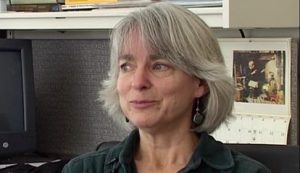
Tomorrow Belongs to Me (excerpt; 2006)
Jacqueline Donachie and Dr Darren Monckton
05:39
This work is the result of a five-year collaboration with Darren G. Monckton, Professor of Human Genetics at the University of Glasgow, that looked at anticipation, the phenomenon of certain genetic conditions worsening as they are passed on from generation to generation. The film Tomorrow Belongs to Me is based on interviews with eleven scientists who were involved in the key research that proved pivotal in establishing the idea of anticipation as a true biological effect.
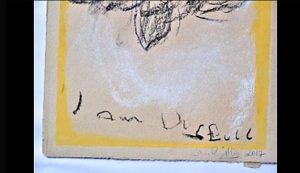
Binky (2015)
Claudia Sacher
02:00
www.finestudios.co.uk/fine-studios/artist/claudia-sacher/
In this short film, we experience art as therapy, a means to heal and form bonds of kinship. Claudia Sacher is a visual artist working in the areas of drawing, sculpture, video and installation and a volunteer lead artist for Art for the Brain, a brain injury and dementia friendly art workshop for dementia/alzheimers, brain injury and stroke patients, and their friends, family and carers.

The Lion’s Mouth Opens (2014)
Lucy Walker
15:53
This multi-award-winning documentary by Lucy Walker explores the impact of genetic bonds and genetic testing on how we face our destiny. Courageous young filmmaker-actress Marianna Palka gathers her friends around her as she finds out whether she has inherited Huntington’s Disease, an incurable degenerative disorder which took her father and now has a 50% chance of taking her body and her mind. This director’s cut version of the film omits Palka’s recital of The Lion’s Mouth Opens, the Bob Dylan poem about Woody Guthrie who died from Huntington’s Disease.
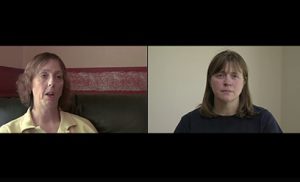
Hazel (2015)
Jacqueline Donachie
09:48
In this poignant award-winning film, we are introduced to the siblings of individuals with Mytonic Dystrophy, a rare genetic condition. Donachie asks: When is familial resemblance overtaken by another layer of inheritance that, like long legs or short tempers, also comes from your parents? In Hazel we see kinship that leads to assumptions about health, ability and competence made both by ‘the outside world’ and within family dynamics. The interviews for the artwork Hazel recognise the importance of considering the private, domestic experience of an inherited genetic condition by asking women to speak frankly about their own lives.
